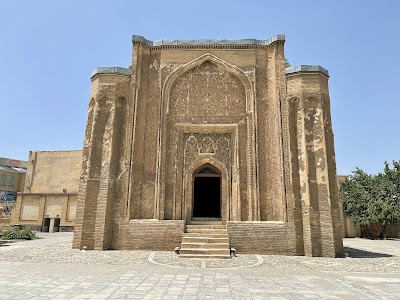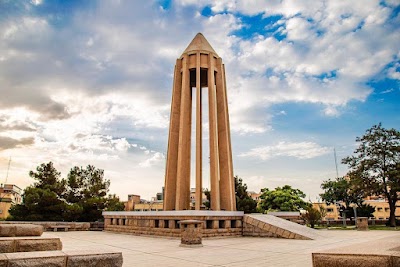Alavian Dome (گنبد علویان)
Overview
Certainly! Here’s a revised version of your travel description, structured for clarity and engagement:
---
Nestled in the historic city of Hamadan, Iran, the Alavian Dome stands as a remarkable testament to the architectural brilliance and rich cultural heritage of its time. As one of Iran's oldest cities, Hamadan is home to a wealth of historical sites, but the Alavian Dome—known as Gonbad-e Alavian in Persian—holds a special significance due to its intricately designed façade and deep historical roots.
The Alavian Dome dates back to the Seljuk period, which flourished between the 11th and 14th centuries. This era was characterized by remarkable advancements in Islamic art and architecture, with the Alavian Dome serving as a prime example of Seljuk ingenuity. Initially constructed as a mosque, the structure was later transformed into a family mausoleum for the Alavian family, reflecting the evolution of its purpose through layered construction and thoughtful design elements.
Architecturally, the Alavian Dome is celebrated for its stunning stucco work and intricate geometric patterns that embellish its walls. The exterior features a captivating array of ornamental brickwork, creating an illusion of movement and depth. Upon closer inspection, visitors will delight in the floral motifs and elaborate calligraphy that adorn the structure. This exquisite stucco work not only captivates the eye but also exemplifies the craftsmanship and decorative techniques prominent during the Seljuk era.
Inside the Alavian Dome, guests can admire the sophisticated interior design. The central chamber, which contains the tombs of the Alavian family members, is surrounded by arches and niches adorned with additional stucco decorations. The domed ceiling stands out for its symmetrical arrangement and intricate detailing, fostering a serene atmosphere that reflects its original spiritual purpose.
The significance of the Alavian Dome extends beyond its architectural beauty; it serves as a historical canvas that narrates the rich past of Hamadan and the myriad cultural influences that have shaped the city over centuries. The transition from a mosque to a mausoleum symbolizes the evolving role of religious and communal spaces in Iranian society. Each layer of construction and design element tells a chapter of Hamadan's history, offering visitors a profound insight into the city's evolution.
Interesting facts about the Alavian Dome further enhance its allure. For instance, despite its name, the dome’s original roof structure has not withstood the test of time. The current structure is the result of several restorations aimed at preserving its historical integrity. Additionally, the construction showcases a unique type of mortar that has acted as a robust binding agent, allowing the detailed stucco work to endure through the ages. This technique remains a subject of interest for architectural historians seeking to understand the building practices of that period.
Another captivating aspect is the dome's strategic location in Hamadan. Situated away from the city's bustling commercial areas, the Alavian Dome offers a peaceful retreat for visitors. This tranquil setting enhances the overall experience, inviting tourists to fully immerse themselves in the historical and spiritual ambiance of the site. The surrounding gardens and pathways provide a picturesque backdrop, perfect for leisurely strolls and photography.
For foreign tourists, a visit to the Alavian Dome is not merely an architectural tour; it is an educational journey into Iran’s medieval history. Guides and informational plaques are often available to provide context, ensuring that visitors appreciate the significance of every detail within the dome. It is advisable to visit during the early morning or late afternoon when the light casts enchanting shadows on the intricate brickwork, highlighting the craftsmanship of the Seljuk artisans.
In conclusion, the Alavian Dome in Hamadan is more than just a historical structure; it is a monument that encapsulates the artistic, cultural, and architectural zenith of the Seljuk period. With its intricate designs, historical importance, and the stories woven into its walls, it is a must-visit landmark for anyone interested in the rich tapestry of Iran’s history. Whether you are a history enthusiast, an architecture aficionado, or simply a curious traveler, the Alavian Dome promises a memorable and enriching experience.
---
This revised version enhances readability, highlights key topics, and maintains an engaging tone throughout.





